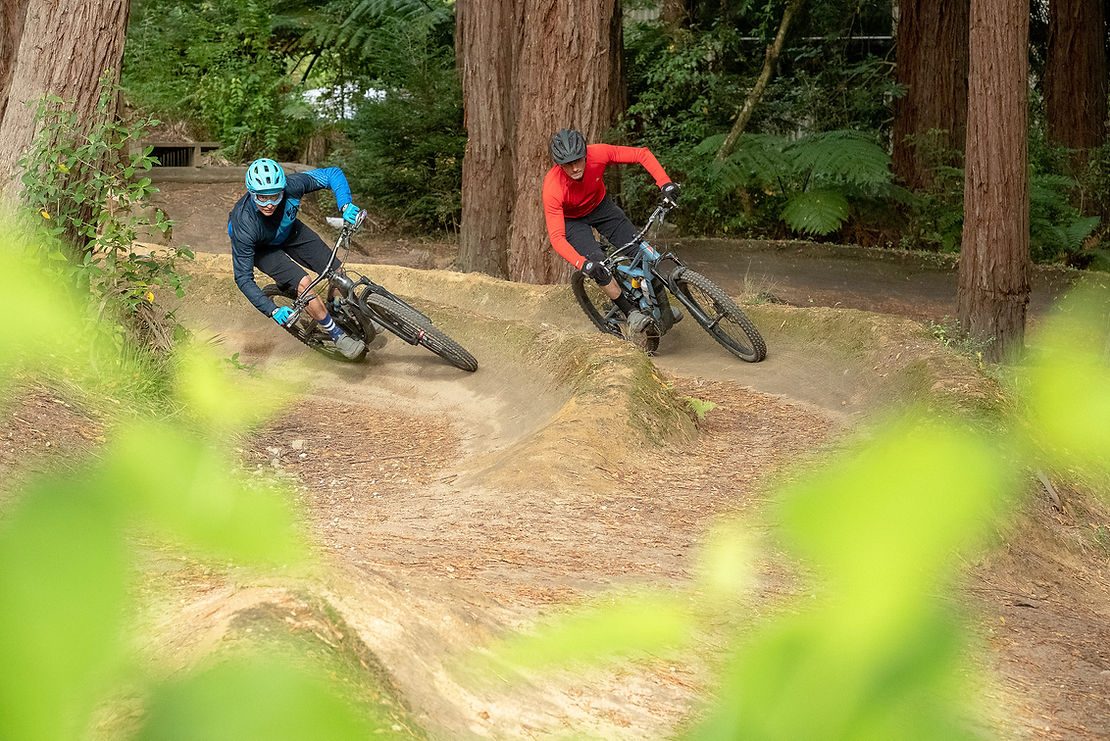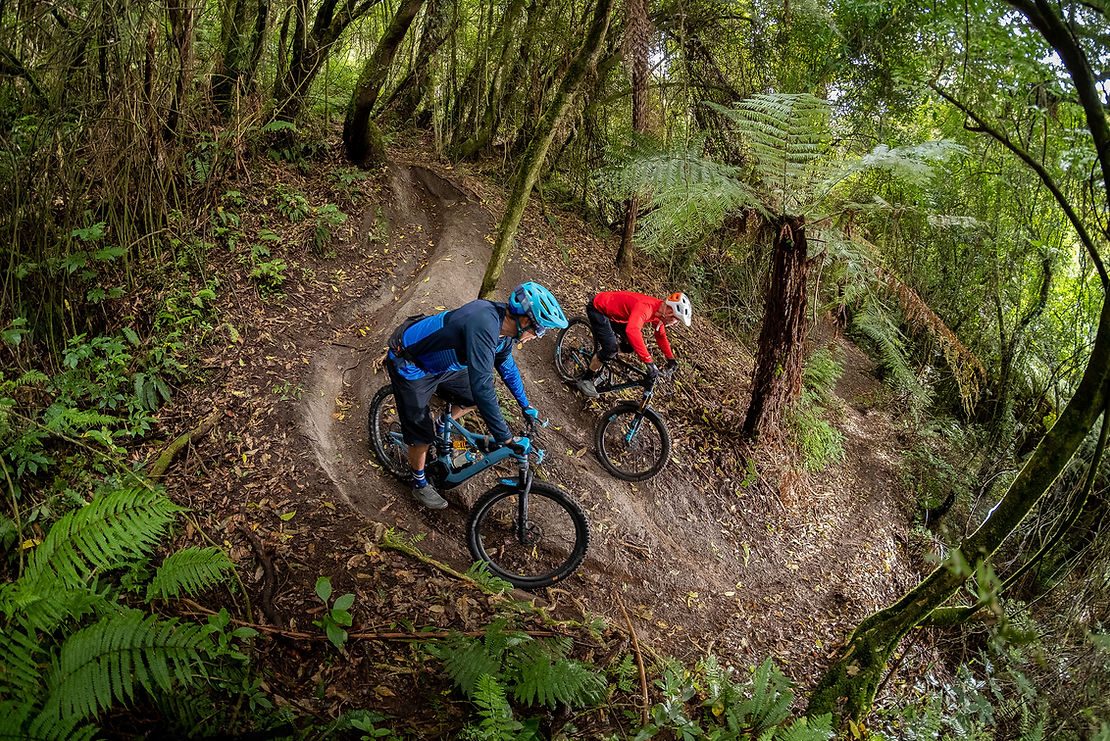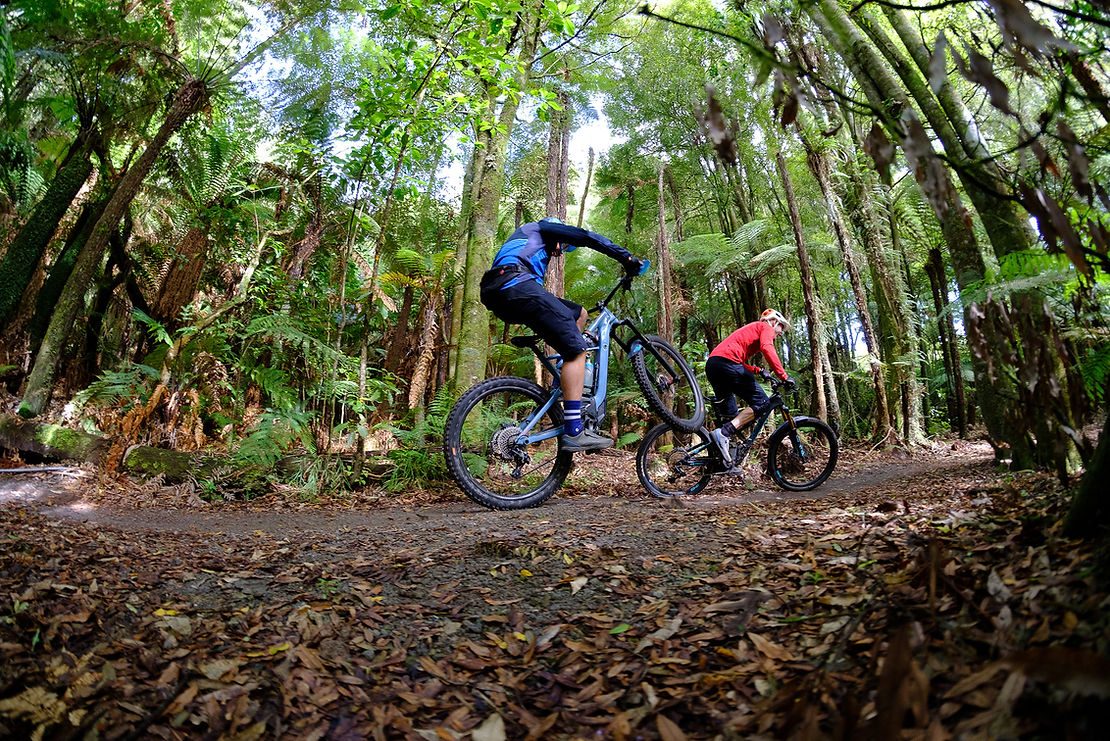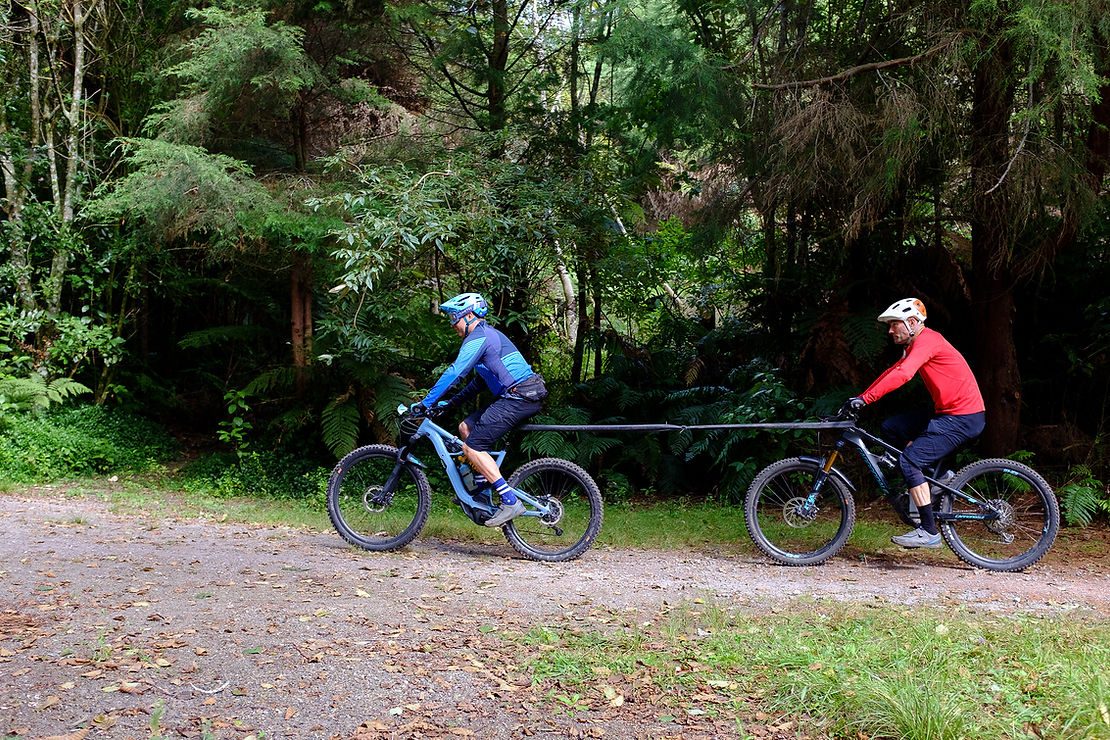One of the great things about any flavour of mountain biking, is its freedom. Outside the realms of competition, its lack of rules and regulations contribute to expanding the fun-factor of merely riding in the great outdoors. There are a few unwritten rules of the jungle, though; some obvious to anyone with a bit of common sense or riding experience; and others which are more abstract. The growing popularity of eBikes on NZ trails adds another dimension to the mix of what is considered ‘proper’ trail etiquette. Although I’d never be arrogant enough draw a line in the sand and say you must do this or that, there are factors at play with eBikes being a valid and growing part of our mountain biking culture, and these are changing some of the previous long-standing courtesies.

A significant one is labelling other riders. You know the drill; you rock up to a trail head and size up any other riders there – trying to judge their ability by the kit they’re wearing, how pro-looking their bike setups are, and that indefinable confidence some riders exude. All this helps determine the self-seeding pecking order of who should head off down the trail first. We’re still at a stage where there are plenty of self-important elitists who swear they’ll never taint their riding pedigree by being seen astride a motor-assisted mountain bike. Woe betide any E-bike rider who arrives at a downhill trailhead at the same time as one of these purists, as they would instantly be tagged as old, lazy or just a cheat for making their climbing easier. That is a mistake, though. As a literal example – I’m aware of several local hotshots who spend their time equally between their regular bikes and their motor-assisted ones. If one of these guys is at the start of your favourite Grade 5 trail it doesn’t matter which bike they’re on, they’re going to beat most riders to the end of it.
On the flip side, E-bike riders shouldn’t gauge other riders by their own standards. Sure, eBikes are supremely capable, and in the hands of a skilled rider are quite the rocketship on descents, even when not pedalling. But just because an eBike rider can ride fast, doesn’t mean their concept of ‘fast’ matches up with other riders they share the trail with. I am thinking particularly of a different couple of local riders I know, one who is an elite triathlete with great mountain bike skills, and the other who successfully races at elite level across DH, Enduro and XC disciplines. I reckon they’d give the average eBike rider a run for their money on almost any style of trail, except for an outright gravel road climb.

One of the points of difference when riding an E-bike is the sheer number of riders you’ll pass on climbs of all descriptions, from gravel roads to single-track. When riding an eBike, I’ve occasionally found a cheery ‘G’day’ is received with a bit of a grunt when passing riders on regular bikes. Sometimes, there will even be a mumble about cheating or some such nonsense. On particularly busy days in the forest, I’d try to minimise the effect by dialling down the motor assist or even turning it completely off. This serves to both reduce the noise of the motor whirring away to make the E-bike presence less obvious, and to pass the rider in question at a more moderate pace. There is no real requirement to do this, it’s just a small element of trying to be aware of, and courteous to, other riders.
Those aforementioned hotshots I was speaking of are at the stage of getting bells for their E-bikes. Although efficient – and even essential – for commuters, there is no denying that a bell is pretty uncool by most mountain bike standards. But… these guys are passing people so often, the bell serves a purpose to gently say, ‘hey, I’m here and I’m coming through’, without needing to engage in a more direct verbal interaction such as, ‘hey, how’s it goin’? On your right’. A gentle ‘ding ding’ sound should mitigate some of the mumbled comments about cheaters

Just riding an E-bike doesn’t automatically make the rider polite and aware of their fellow forest users though. I’ve also seen the opposite in effect: a family of recreational riders on rental E-bikes. I’m pretty sure they were recreational – their attire of Canterbury rugby jerseys, short shorts and running shoes kind of gave them away. Nothing at all wrong with that, but there was plenty wrong with their riding manner. Their newness to mountain biking was further evidenced by their disregard of other riders around them. They were having a great time, to be sure – grins plastered on their faces as they wove between the riders on regular bikes, on the climb to one of the most heavily trafficked intersections in Rotorua’s Redwood Forest trail network. With speeds two or three times faster than that of anyone else around them, the potential for bringing down a rider was high. They got away with it. This time. The moral of that story is that E-bike riders have a responsibility to be aware of other riders around them and tailor their speed accordingly. Especially as they generally have more available speed on tap at any given time.
Don’t be tempted to make jokes at the expense of E-bike riders who need to team up in order to hoist their hefty rigs onto their bike racks or the back of their utes. There may well come a time when you make use of the ability of a rider with E-bike power to tow you uphill or to a ride’s end. I’ve used a simple makeshift set-up myself, so I can attest to its efficiency. All it takes is a couple of spare innertubes linked together, one end slung over the seatpost of an E-bike, the other wrapped around the bars and then held in place under the rider’s hand on the grip. The rider being towed on their regular bike, whether it be because of a mechanical issue, injury or any other reason, will be in for an effortless trip to their destination. In my use of the technique, I was towing a photographer with his 20kg bag of kit on his regular bike up a sizeable gravel road to get to a photo location. Left to our own devices I would have taken a fraction of the time on the E-bike, and been left waiting while he battled uphill. As it was, we were able to easily roll up the hill at 20kph.

Don’t get too smug, joking that when an E-bike rider’s battery runs flat they’re stuffed. Sure, riding a heavy E-bike with no power is tougher than riding a regular bike, but it’s not wildly impossible by any means. I’ve done it myself, run an E-bike flat because I was having too much fun seeing how many technical descending trails I could fit into one day (I can’t answer the question of how many though, as I was having so much fun I lost count). The last hour of my ride that day was using the lowest of minimal power to eke out the final remnants of battery to get out of the forest, then dead flat battery riding the half hour of roads back to my house. It was a little slower on the climbs of course, but not ridiculously so. Therefore, don’t think an E-bike rider’s ride ends if the battery goes flat.
Them and Us. No matter which side of the equation you see yourself fitting into, there are perceptions about each – often completely ignorant. Ultimately, a rider’s abilities can lie anywhere on the spectrum from beginner to local legend, regardless of whether their bike that day is motor-assisted or not. One of the unspoken rules of mountain biking remains, and applies to both acoustic and E-bike riders: be nice to each other out there, we’re all mountain bikers at the end of the day.
Words & Photography: Nick Lambert

